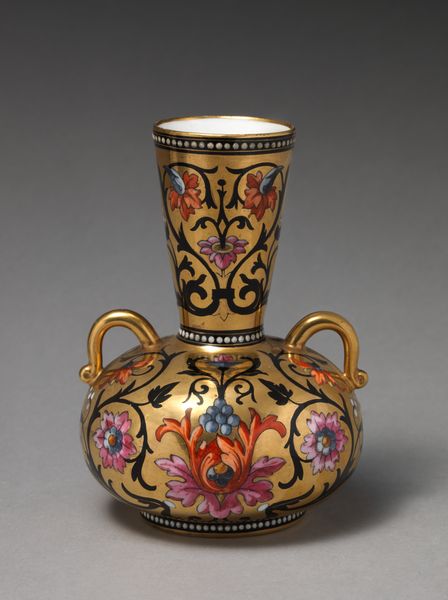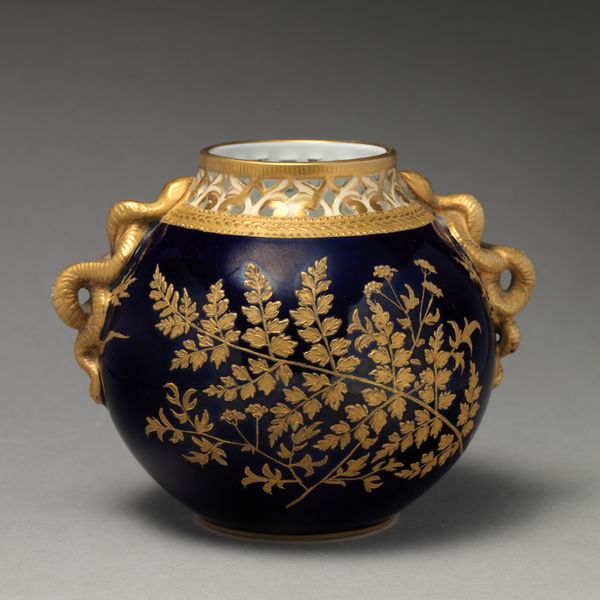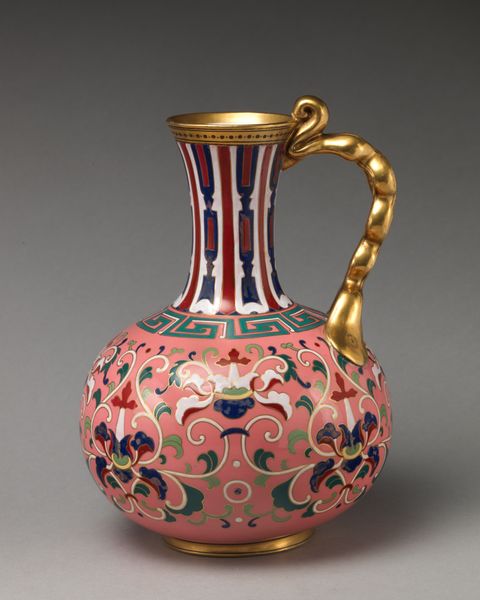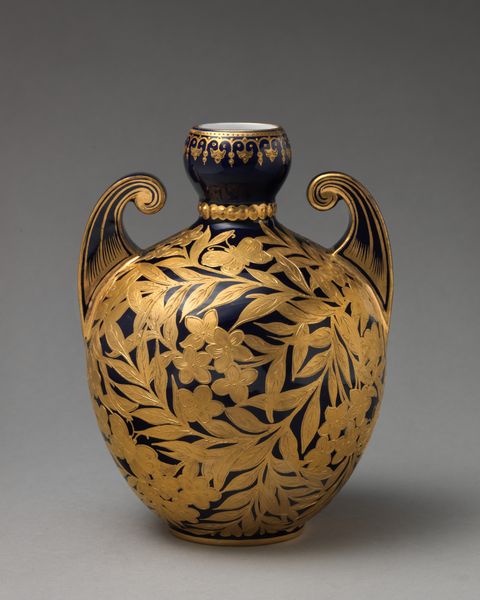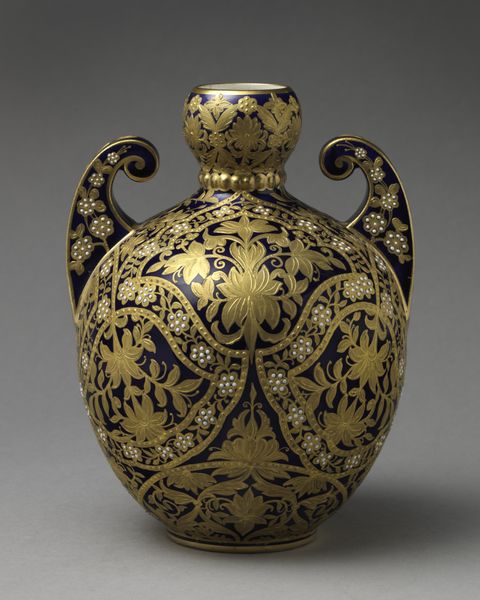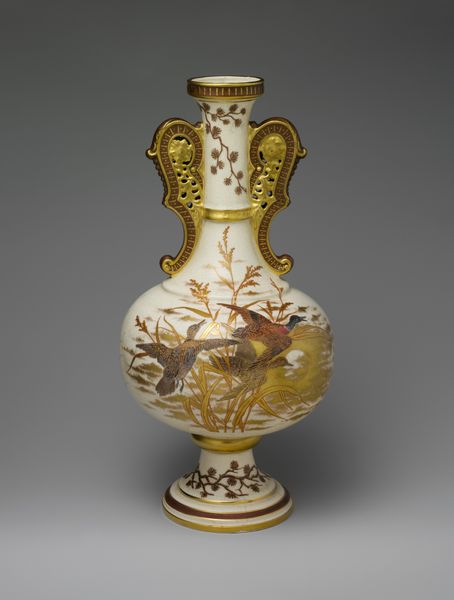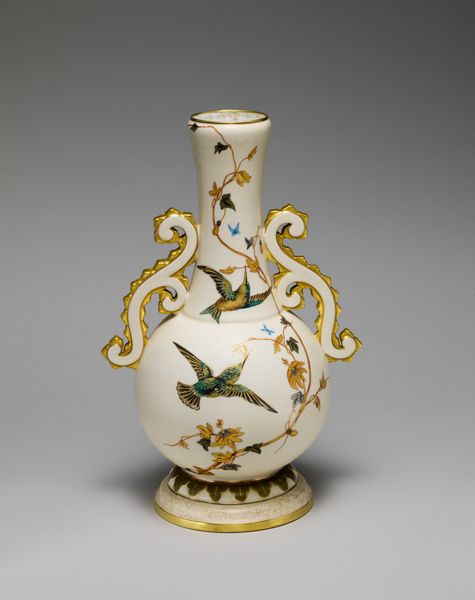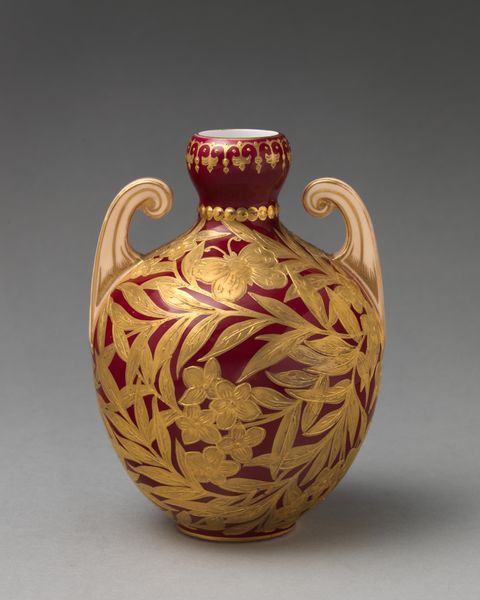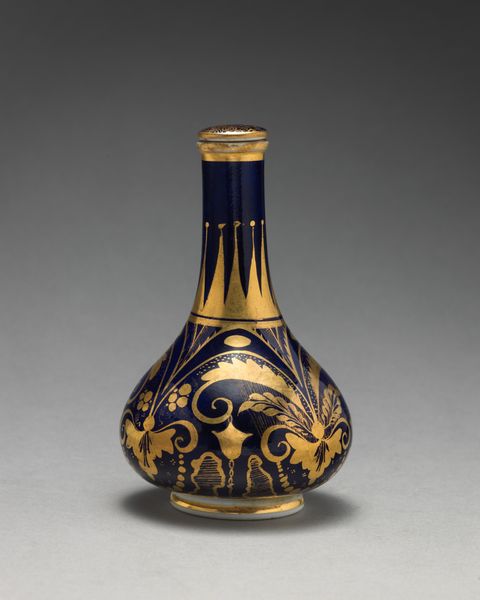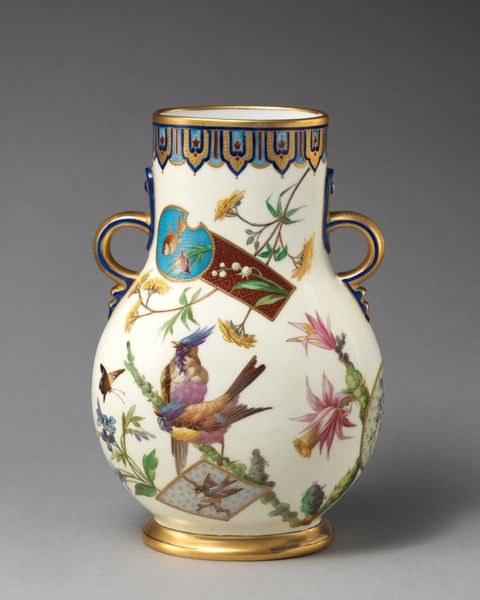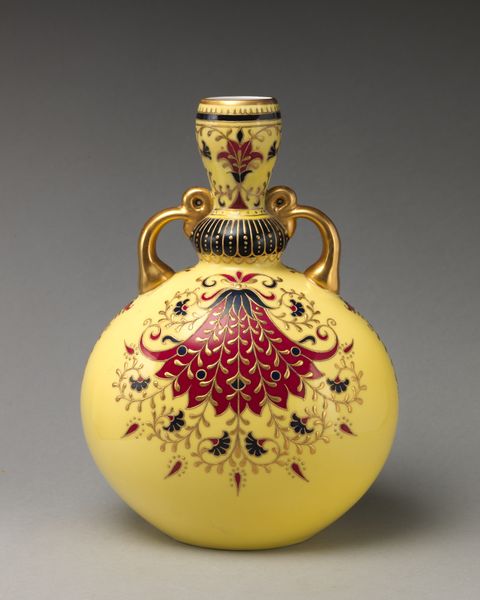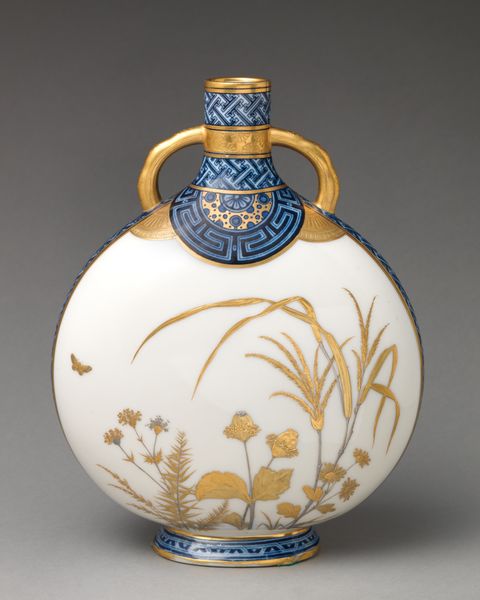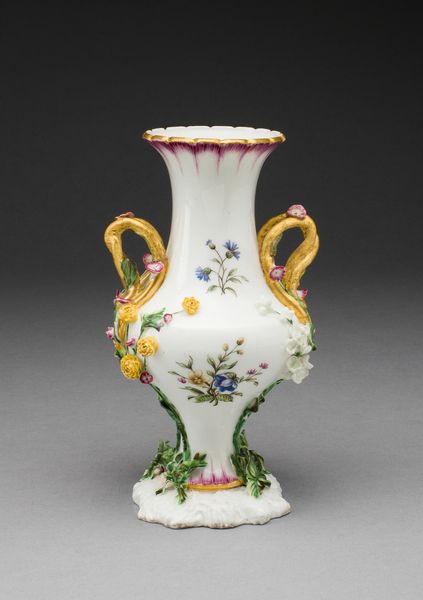
ceramic, porcelain, sculpture
#
ceramic
#
porcelain
#
sculpture
#
orientalism
#
ceramic
#
decorative-art
Dimensions: confirmed: 5 1/2 × 3 7/8 × 3 7/8 in. (14 × 9.8 × 9.8 cm)
Copyright: Public Domain
Editor: So, this is a porcelain vase made by Coalport in the 1870s, titled "Vase with branch of white blossom." It feels very opulent and decorative. What symbolic meanings are conveyed by the cherry blossom design on this ceramic piece? Curator: Notice how the blossoms almost float against the gold? That positioning is significant. The blossoms become emblems, abstracted from direct botanical representation, more like ideograms hinting at springtime, renewal, and ephemeral beauty. Editor: I see that. Does the specific *type* of blossom hold meaning as well? Curator: Precisely. These are explicitly “white blossoms,” signaling purity, transience, even mourning. And the pairing, as the title suggests it's one of two, can be a signifier for togetherness, balance, or even duality. The ‘orientalism’ stylistic tag here is interesting too, how are you reading the symbolic connection between "east" and "west" at this time? Editor: So the piece uses a western form to express Eastern aesthetics. Are you suggesting the vessel itself—the vase—acts as a symbolic container? Perhaps holding not just flowers but also cultural meanings? Curator: Indeed. The vase as a vessel holds significance. And the two handles invite touch, possession, yet also suggest balance, reciprocity. It encourages the observer to see beyond surface ornamentation into layered meanings, a bridge between cultures if you will. Editor: This has totally reshaped my understanding. The blossom's visual delicacy becomes almost paradoxical. Curator: Exactly! We’ve moved beyond simple aesthetic appreciation, finding layers of cultural encoding and symbolic dialogue within the Coalport vase.
Comments
No comments
Be the first to comment and join the conversation on the ultimate creative platform.
